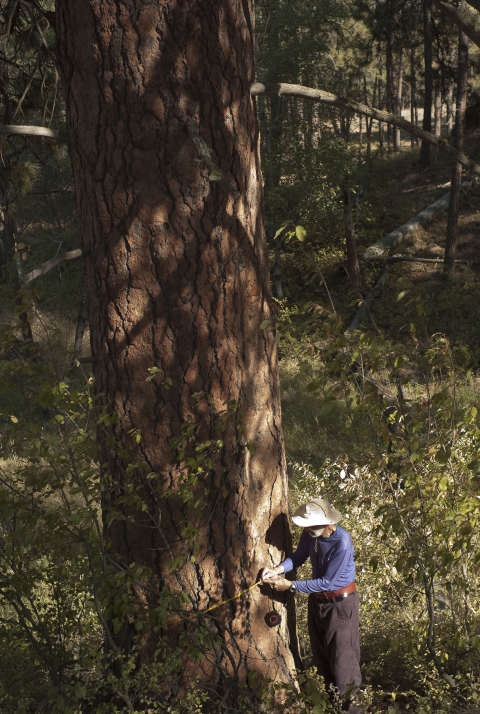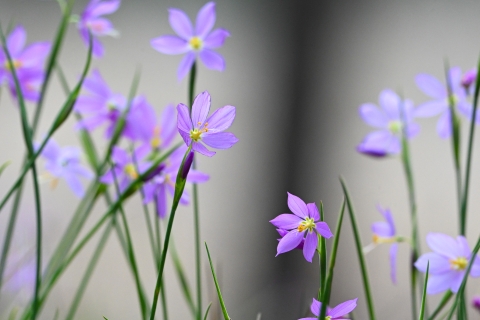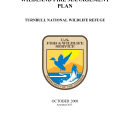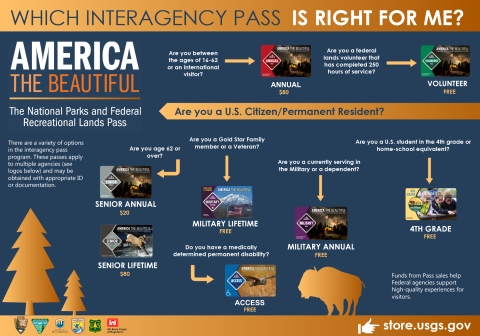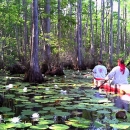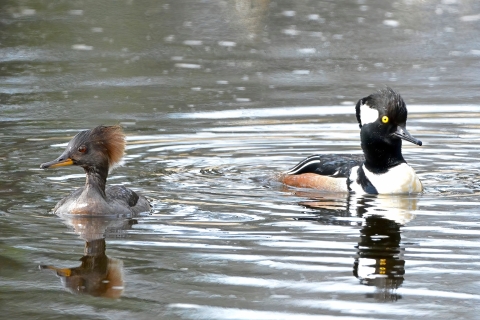What We Do
The National Wildlife Refuge System is a series of lands and waters owned and managed by the U.S. Fish & Wildlife Service. Wildlife conservation is at the heart of the refuge system. It drives everything we do from the purpose a refuge is established, to the recreational activities offered there, to the resource management tools we use. Selecting the right tools helps us ensure the survival of local plants and animals and helps fulfill the purpose of the refuge.
Turnbull’s focus includes restoring and maintaining the native ecosystem processes of the Channeled Scablands. Habitat on the refuge is managed to sustain the diversity of flora and fauna native to this unique ecosystem. To achieve habitat diversity, the refuge reintroduces fire to fire-dependent plant communities, restores wetlands, deploys invasive species invasive species
An invasive species is any plant or animal that has spread or been introduced into a new area where they are, or could, cause harm to the environment, economy, or human, animal, or plant health. Their unwelcome presence can destroy ecosystems and cost millions of dollars.
Learn more about invasive species control, and plants native vegetation. Research is conducted on various habitats and wildlife to direct future management. Elk is also carefully managed through a limited-entry annual hunt to ensure a healthy regeneration of riparian riparian
Definition of riparian habitat or riparian areas.
Learn more about riparian forests. The Refuge provides an extensive environmental education and outreach program for students of all ages.
Management and Conservation
Refuge Planning
National Wildlife Refuge planning sets the broad vision for refuge management and the goals, objectives, strategies, and actions required to achieve it. Planning ensures that each refuge meets its individual purposes, contributes to the Refuge System’s mission and priorities, is consistent with other applicable laws and policies, and enhances conservation benefits beyond refuge boundaries.
Refuges use a wide range of land management tools based on the best science available. Some refuges use prescribed fires to mimic natural fires that would have cleared old vegetation from the land helping native plants regenerate and local wildlife to thrive. Other refuges contain Wilderness areas where land is largely managed in passively. The management tools used are aimed at ensuring a balanced conservation approach where both wildlife and people will benefit. At this field station our conservation toolbox includes:
Comprehensive Conservation Plan
Refuge management is guided by strategies developed in the Refuge Comprehensive Conservation Plan and a step down Habitat Management Plan for a 15-year period.The purpose of a Comprehensive Conservation Plan (CCP) is to specify a management direction for the Refuge for the next 15 years. The goals, objectives, and strategies for improving Refuge conditions—including the types of habitat we will provide, partnership opportunities, and management actions needed to achieve desired conditions – are described in the CCP. The Service’s preferred alternative for managing the Refuge and its effects on the human environment, are described in the CCP as well. The Habitat Management Plan (HMP) provides more detail on managing Turnbull’s habitat.
The 2007 Final Comprehensive Conservation Plan for Turnbull NWR can be found here: https://ecos.fws.gov/ServCat/Reference/Profile/1480
For Turnbull NWR, there are three main goals outlined in the CCP:
- Habitat protection and restoration: The Service will strive, with partners, to protect water resources that support Refuge wetlands and wildlife, and to protect and restore additional wetlands, rare Palouse steppe habitat, aspen/ riparian riparian
Definition of riparian habitat or riparian areas.
Learn more about riparian habitats, and pine forests within the Channeled Scablands. - Elk management: Address damage caused by elk browse and to provide a recreational opportunity via an annual elk hunting program.
- Visitor Services: Increase interpretive and viewpoint opportunities on the refuge, and expand environmental education opportunities both on- and off-refuge.
Habitat Management
Historically, the primary focus of habitat management at Turnbull NWR was waterfowl, and in the 1970s it was directed more specifically at managing for redheads. In the 1990's, conservation of biological diversity replaced this single species focus as members of the native floral and faunal community declined and disappeared as the ecosystems surrounding the refuge were altered.
Both qualitative and quantitative objectives have been established to provide more detailed direction and targets that will need to be met in order to achieve refuge goals. Objectives address limitations to meeting refuge goals identified by the Service, the habitat needs of native wildlife species, and the maintenance of the integrity of the refuge in its ecoregional setting. The habitat needs of wildlife species were addressed using a wildlife guild concept that groups wildlife by their common use of 10 different habitat strata for both breeding and foraging. Because guilds are often large, key management or indicator species were selected for each guild to focus management actions. These species were chosen because of legislative mandate (threatened or endangered), their significance to conserving biodiversity, the critical status of their populations, or the fact that their habitat requirements represent a subset of the membership of their respective guild.
Management strategies have been developed to meet these objectives. These strategies include both manipulative and administrative actions that will be applied over the next 15 - 20 years. Manipulative actions will include restoration of fire through prescribed burning, tree removal utilizing a variety of silvicultural methods, noxious weed control, experimental livestock grazing and haying, water management, wetland restoration, and riparian and grassland vegetation restoration. Administrative actions will primarily involve increased coordination with other public agencies and private landowners to protect the quantity and quality of water entering the refuge and prevent the further isolation of the refuge resulting from increased urbanization of landscape linkages.
Fire Management
Past logging, grazing and suppression of fire has created pine stands with tree densities 2 to 4 times pre-settlement conditions. Current restoration efforts involving mechanical thinning, piling and burning of excessive downed fuel, and following up with a low intensity understory burn has begun to restore forest to a natural range of conditions.
Fire suppression strategies employed at Turnbull NWR emphasize firefighter and public safety in combination with a well trained and equipped fire management team that is capable of suppressing wildfires quickly, before significant resource damage can occur. Meeting this objective requires a refuge fire management program with a significant initial attack capability of equipment and personnel. Turnbull Fire Staff include a Zone Fire Management Officer, a Prescribed Fire and Fuels Specialist, a Supervisory Forest Technician, and several seasonal firefighters.
Turnbull firefighters have assisted local Spokane County Fire Districts as well as Washington State Department of Natural Resources personnel on over 100 mutual aid assist fires since 1990, including saving homes and ranches during the infamous "Firestorm 91" which destroyed over 100 homes in eastern Washington.
With the advent of aggressive fire suppression policies during the 20th century forest conditions at Turnbull NWR as well as many other fire dependent forest types throughout the west have changed dramatically. Historic ponderosa pine forests were described as being "open and park like" with 15 to 25 large diameter trees per acre. Fire exclusion has resulted in the removal of the influence of natural fires to thin the density of pine stands through time. Currently stand conditions in many areas of the refuge have densities exceeding 400 trees per acre, growing in "doghair" thickets of suppressed, spindly trees that barely exceed 3 inches in diameter growth after 60 years. These stands have excessive levels of dead material that will eventually contribute to an extreme wildfire.
Management strategies developed for Turnbull NWR call for the integration of a variety of techniques to restore natural stand conditions, reduce hazard fuels and improve wildlife habitat. These strategies include the use of crews to thin non-commercial stands and contract logging operations to be followed by the application of a prescribed fire and a prescribed fire crew. This crew was established to thin our over-crowded stand of Ponderosa pine and re-introduce fire back into the Turnbull ecosystem.
National Wildlife Refuge System (NWRS) Improvement Act of 1997
The NWRS Improvement Act defines a unifying mission for all refuges, including a process for determining compatible uses on refuges, and requires that each refuge be managed according to a CCP. The NWRS Improvement Act expressly states that wildlife conservation is the priority of System lands and that the Secretary of the Interior shall ensure that the biological integrity, diversity, and environmental health of refuge lands are maintained.
For almost a century, the 95 million acre National Wildlife Refuge System had been managed by the U.S. Fish and Wildlife Service under a variety of laws without an "Organic Act," or comprehensive legislation, spelling out how it ought to be managed and used by the public. On October 9, 1997, President Clinton signed the National Wildlife Refuge System Improvement Act of 1997 (Public Law 105-57). The Act amends the National Wildlife Refuge System Administration Act of 1966 in a manner that provides an “Organic Act” for the Refuge System.
The Act was passed to ensure that the Refuge System is managed as a national system of related lands, waters, and interests for the protection and conservation of our Nation's wildlife resources.
The only system of Federal lands devoted specifically to wildlife, the National Wildlife Refuge System is a network of diverse and strategically located habitats. More than 567 national wildlife refuges and thousands of waterfowl production areas across the United States teem with millions of migratory birds, serve as havens for hundreds of endangered species, and host an enormous variety of other plants and animals. Over 39 million people visit units of the National Wildlife Refuge System each year to enjoy a wide range of wildlife-related recreational opportunities.
The passage of this Act gave guidance to the Secretary of the Interior for the overall management of the Refuge System. The Act's main components include:
- A strong and singular wildlife conservation mission for the Refuge System
- Requirement that the Secretary of the Interior maintain the biological integrity, diversity, and environmental health of the Refuge System
- A new process for determining compatible uses on refuges
- Recognition that wildlife-dependent recreational uses involving hunting, fishing, wildlife observation and photography, and environmental education and interpretation, when determined to be compatible, are legitimate and appropriate public uses of the Refuge System
- That these compatible wildlife-dependent recreational uses are the priority general public uses of the Refuge System
- A requirement for preparing a comprehensive conservation plan for each refuge
Our Services
Passes & Permits
Passes
Entrance to the refuge Public Use Area is free.
Visitor access is limited to a 3,300 acre Public Use Area. The remaining portions of the refuge are preserved as a wildlife sanctuary and closed to the public, with disturbance even by refuge staff kept to a minimum.
Even though entrance is free, the refuge still sells a series of federal recreation passes that covers the entrance and standard amenity fees charged for using federal recreational lands – including national wildlife refuges. America the Beautiful National Parks and Federal Recreational Lands Passes are valid on all federal lands, including those managed by:
- National Park Service
- U.S. Fish & Wildlife Service
- Bureau of Land Management
- Bureau of Reclamation
- U.S. Forest Service
- U.S. Army Corps of Engineers
- America the Beautiful Annual Pass* ($80, valid of for 1 year)
- America the Beautiful Senior Pass* (must be over 62 years old, valid for lifetime or one year)
- Lifetime Senior Pass is $80
- Annual Senior Pass is $20 (good for 1 year)
- America the Beautiful Access Pass (free, US residents with permanent disability, valid for lifetime)
- America the Beautiful Military Pass (valid for 1 year, free with CAC military ID)
- Gold Star Families (free, visit the National Park Service Veteran and Gold Star Families webpage for link to print pass)
- America the Beautiful Volunteer Pass (valid for 1 year, volunteer with over 250 hours. Passes are awarded through the volunteer agency.)
- America the Beautiful Every Kid in a Park 4th Grade Pass (free to all US 4th Graders via voucher. Visit the Every Kid Outdoors webpage.)
America the Beautiful Annual Passes are available online through the USGS Recreational Passes webpage or at the visitor contact station, when open. Please visit the National Wildlife Refuge System website for more information about passes.
Special Use Permits
Any use of a National Wildlife Refuge that would require special access and is not covered under existing rules and regulations for wildlife dependent visitation of the refuge will require an approved for a Special Use Permit through the refuge. These special uses include any commercial activities (timber harvest, haying or grazing), research activities, or special events.
The U.S. Fish and Wildlife Service issues permits under various wildlife law and treaties at a number of offices throughout the country. Permits enable the public to engage in legitimate wildlife-related activities that would otherwise be prohibited by law. Service permit programs ensure that such activities are carried out in a manner that safeguards wildlife. Additionally, some permits promote conservation efforts by authorizing scientific research, generating data, or allowing wildlife management and rehabilitation activates to go forward.
Permits are handled by permitting programs in International Affairs (Management Authority), Endangered Species, Law Enforcement, and Migratory Birds.
Visit the National Wildlife Refuge System website for Special Use Permits.
For more detailed information or to apply for a permit, go to The U.S. Fish & Wildlife Service website. You may also contact the refuge manager directly:
Turnbull NWR Refuge Manager
Cassandra Roeder
cassandra_roeder@fws.gov
1-509-559-3021
Our Projects and Research
Since the first lands were purchased establishing the refuge, research have been completed on the refuge to better understand the natural and cultural resources of the Channeled Scablands ecosystems. Research has been conducted by refuge biological staff and students and professors from several universities. Research topics covered have included: wildlife habitat relationships, limnology, nesting ecology of cavity nesting birds, roosting ecology of bats, predator/prey interactions, effects of management actions on wildlife populations and habitats, impacts of invasive species invasive species
An invasive species is any plant or animal that has spread or been introduced into a new area where they are, or could, cause harm to the environment, economy, or human, animal, or plant health. Their unwelcome presence can destroy ecosystems and cost millions of dollars.
Learn more about invasive species on refuge ecosystems, insect/plant co-evolution, fire effects on the ecology of individual plant species, plant communities, animal/plant relationships, and the impact of native browsers on plant growth and development.
In the past decade, the refuge has hosted between 10 to 20 research projects annually. Although researchers from as far away as University of Illinois, the University of Alberta, Canada and the University of California at Santa Cruz, the large majority of researchers have come from local colleges and universities including Eastern Washington University, Washington State University, Gonzaga University, University of Idaho, and the University of Washington. Eastern Washington University, which is just a few miles north of the refuge in the City of Cheney, has operated a research facility on the refuge under a cooperative agreement with the Service since 1973. This is the only facility of this type in the National Wildlife Refuge System. Its presence on the refuge has resulted in a strong research relationship with the University.
The refuge has worked with several of these universities to complete research directed at filling information gaps that hinder the development of management strategies to achieve wildlife and habitat objectives. This type of research is given priority in the approval process. All potential researchers are required to submit a research proposal for review and recommendation by the Refuge Biologist and approval by the Refuge Manager. The refuge has mostly limited research to 6 concurrently run projects. Proposals are reviewed for their potential benefit to the Refuge, Ecoregion and Region, their compatibility with the refuge purposes, and the possibility of conflicts with on-going studies, refuge monitoring efforts and management activities. Once a project is approved, a Special Use Permit is issued that may stipulate certain special conditions to minimize impacts to refuge resources and conflicts.
You can help refuge staff by logging all of your observations on iNaturalist. This free app allows naturalists from all across the world collect and share their observations. The community on iNaturalist can help identify unknown species, track invasive species, and monitor phenological changes. What’s more, by recording and sharing your observations...
Law Enforcement
U.S. Fish and Wildlife Service law enforcement officers have a wide variety of duties and responsibilities. Law enforcement is an integral part of managing the National Wildlife Refuge System. They enforce federal, state and refuge hunting regulations that protect migratory birds and other game species from illegal take and preserve legitimate hunting opportunities. Officers help visitors understand and obey wildlife protection laws.
Laws and Regulations
All of the rules and policies for the refuge are based in federal and state law, as well as international treaty.


